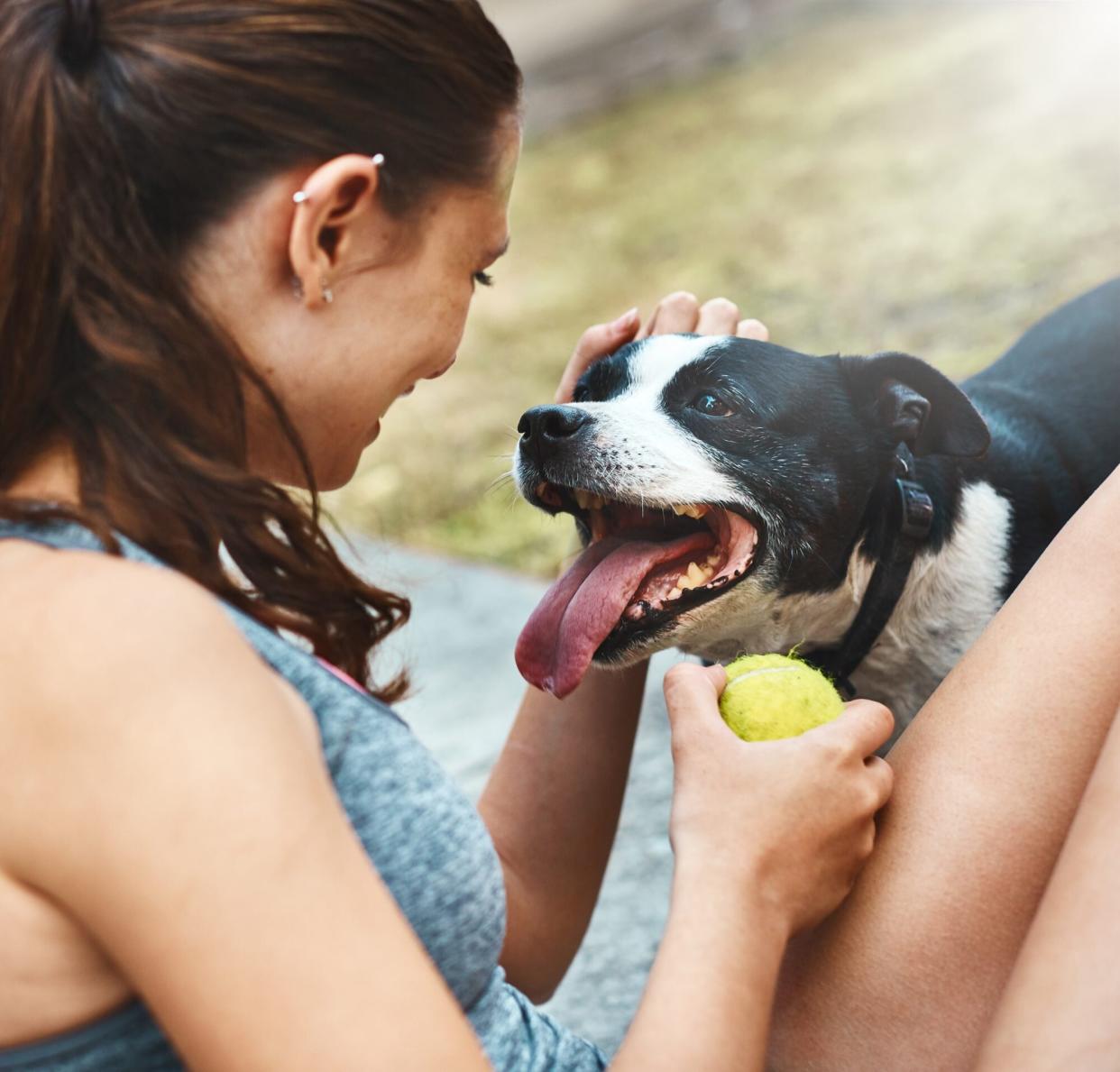Five Signs Your Dog Is Getting Too Much Exercise

RapidEye / Getty Images
Giving a dog a great deal of exercise doesn't always mean they'll simply sleep well that night. In some cases, dogs who over-exert themselves can experience "damaged paw pads, sore muscles, joint injuries, and heat exhaustion or heat stroke," says Jennifer Coates, DVM, and Pet Life Today advisory board member. In extreme cases, exertional rhabdomyolysis—which causes muscle tissue to break down and lead to serious pain and kidney damage—can occur, she says.
So, if you spot these signs of your furry friend getting too much exercise, give them time to rest.
Related: Healthy and Fun Exercises with Your Dog
Your dog pants vigorously.
According to Joe Alcorn, M.S., D.V.M. of Care Animal Hospital in Temecula, California, the most common sign your dog has over-extended himself is panting—and panting heavily. If your dog can't seem to catch his breath, then Alcorn recommends letting him recover for five to 10 minutes—or until he resumes breathing normally—before continuing to exercise or going home.
Your dog slows down.
If you're walking or playing with your dog and he slows down—for example, he chases after a ball more slowly or lags behind you as you walk—it's a sign he's too tired and it's time to take a break or stop altogether, says Coates. "Some dogs have an almost insatiable desire to get up and go, so you really have to pay attention to what appear to be subtle signs like these," she explains.
Your dog refuses to move.
A dog that lays down and refuses to move has gotten too much exercise. "They will not get up, they will not follow you home, and they are telling us that this exercise has been too much," says Alcorn. In this case, carry your dog or drive him home, he says, but do not force him to walk.
Your dog starts to limp.
A dog who's limping has been injured, possibly during exercise, says Coates—and continued exercise will only make his injury worse. If you spot a limp, check your dog's affected paw for embedded objects, like a thorn or stone. If you can't find anything, "it is reasonable to give your dog a week or so of rest to see if a minor injury will heal on its own," says Coates. "But, if the limp is severe or fails to get better after a week or so of rest, it's time to see a veterinarian."
Your dog appears stiff or sore.
Dogs who have exercised too much sometimes don't show immediate signs of injury. But hours or even a day later, they may seem stiff or sore, says Coates. "In most cases, a few days of rest is all that is needed," she says. However, "dogs that are really having trouble getting around or that are reluctant to eat should be seen by a veterinarian to rule out more severe injuries," she says.

